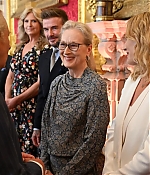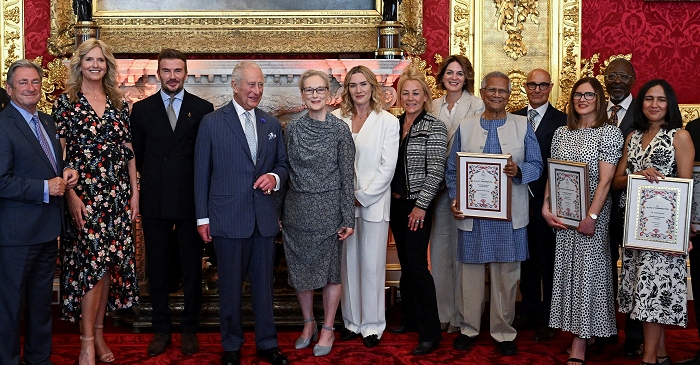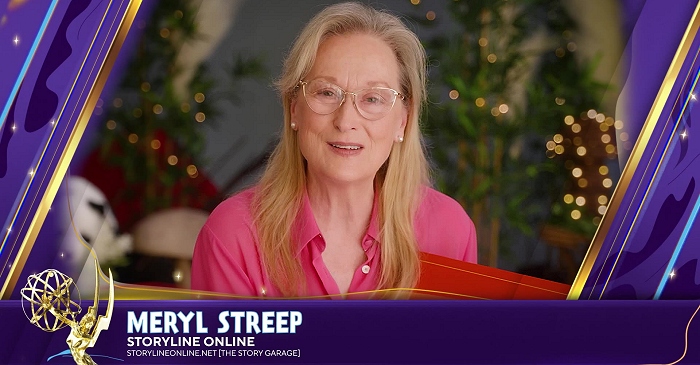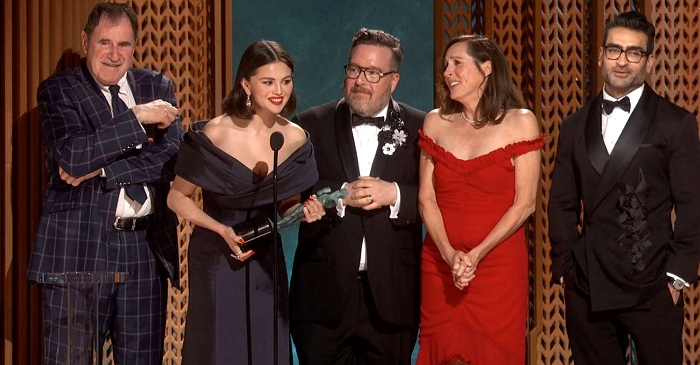|
Simply Streep is your premiere online resource on Meryl Streep's work on film, television and in the theatre - a career that has won her acclaim to be one of the world's greatest living actresses. Created in 1999, Simply Streep has built an extensive collection over the past 25 years to discover Miss Streep's body of work through thousands of photographs, articles and video clips. Enjoy your stay and check back soon.
|
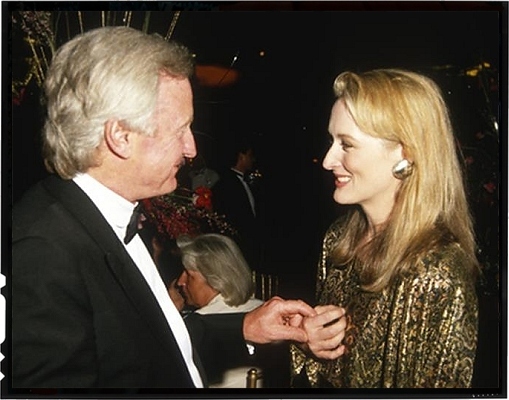
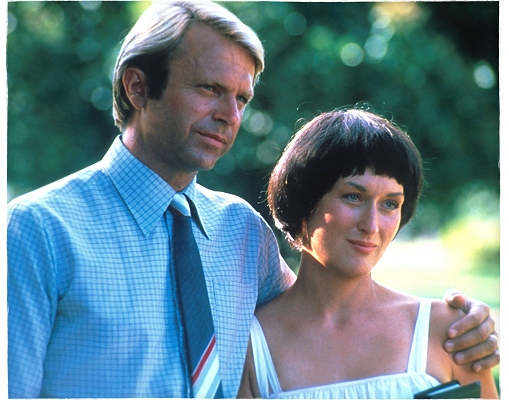
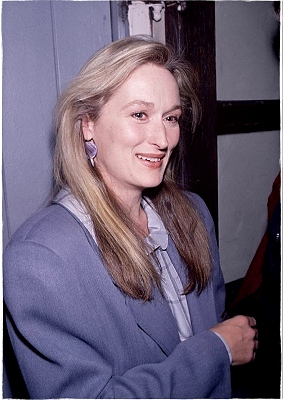
In another off-beat choice for a role, Meryl Streep reunited with director Fred Schepisi for the real-life story of Lindy Chamberlain, an Australian woman accused and convicted of murdering her baby daughter and the infant went missing during a camping trip. Ms. Chamberlains claim that a dingo, an Australian wild dog, fetched the baby from their tent, was met with disbelief and led to her lifelong imprisonment in 1982. The filming attracted quite a media attention in Australia, especially because new evidence was found in 1987 which led to Ms. Chamberlain’s exoneration. It gave Schepisi’s film an even more current feel with additional scenes being added. Meryl Streep received rave reviews for her performance. She won Australia’s equivalent of the Academy Award, the AFI Award and was awarded the Best Actress award at the Cannes Film Festival. In the United States, she received another Golden Globe and Academy Award nomination for her performance.
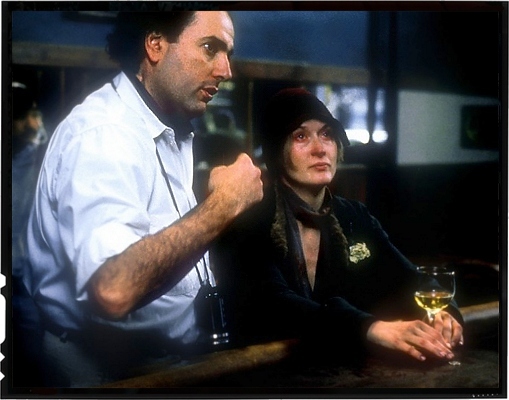


Jack Nicholson and Meryl Streep continued their on-screen relationship with the oddest possible choice – they joined director Hector Babenco in his hopelessly sad drama “Ironweed”, based on the novel by William Kennedy. Nicholson plays a schizophrenic drifter in 1938’s Albany, New York, who spends Halloween in his home town after returning there for the first time in decades. If moviegoers ever had problems recognizing Streep, it was in “Ironweed”. Hidden under a felt hat and dressed in dirty rags, she plays Nicholson’s companion Helen Archer, who was a successful singer in the past, before she lost her home – and her mind. While “Ironweed” was hard to watch, it grossed 7 million dollars in the USA and recognized its stars, Nicholson and Streep, with nominations for both the Golden Globe and the Academy Award.
A big project that never came to fruition was Oliver Stone’s big screen adaptation of “Evita”, for which Meryl Streep was cast in the lead and went as far as recording songs in New. But the project was delayed twice and stopped before production started in 1989, after which Streep left the project. The failure of the project was highly publicised back in the day. It took eight more years, as well as Alan Parker and Madonna, to bring Evita to the screen. Ironically, Oliver Stone also prepared a biopic on Margaret Thatcher with Streep in the lead in the mid-2000s, which fell through as well.
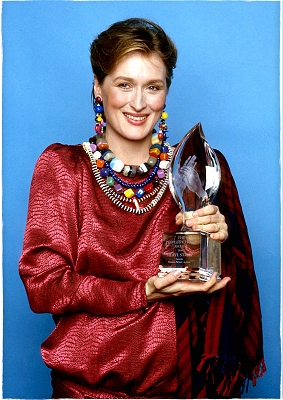
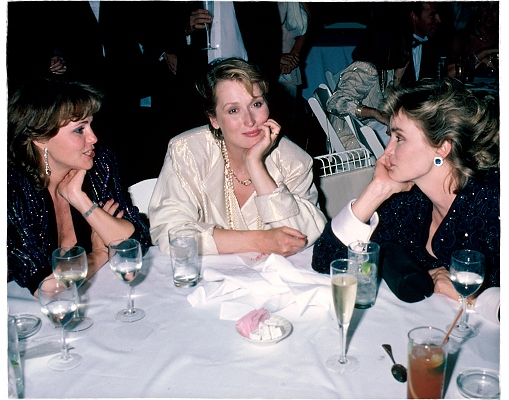
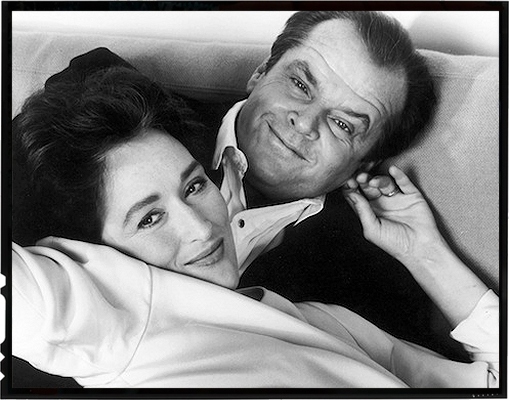
While Meryl Streep has been admired for her dramatic skills early on, she has received a fair amount of criticism by journalists throughout the years for being too serious in her roles, too tight-lipped, and no fun at all on screen. In 1986, she reteamed with Mike Nichols for what would be the first comedy of her film career. In the big screen adaptation of Nora Ephron’s “Heartburn”, Streep plays a woman, who falls in love with a man, played by Jack Nicholson, builds a house and a family, only to see her world fall apart when her husband is having an affair. She leaves him, only to return for the sake of their children, but finds no more fulfillment in her marriage. “Heartburn” transports Ephron’s dry wit and humour, but critics dismissed the film for being too talky and not a fitting vehicle for the star power of its two main attractions. Also in 1986, Meryl gave birth to her third child, a daughter named Grace.
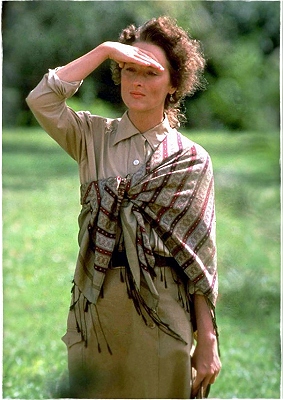
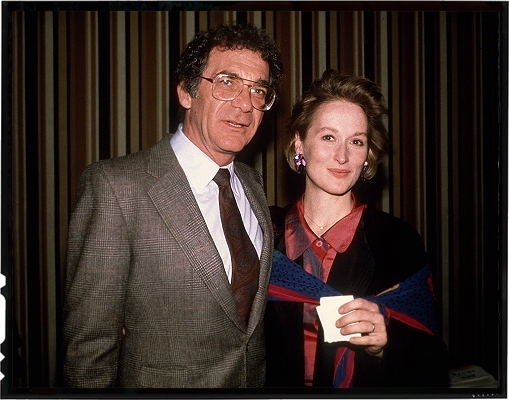
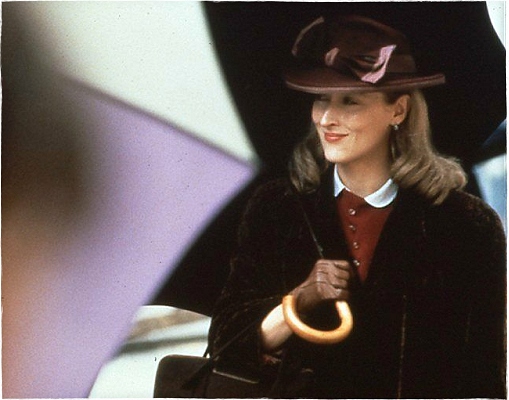
Two very different films were released in 1985. First, Meryl returned to the United Kingdom for the lead role in Fred Schepisi’s adaptation of David Hare’s play “Plenty”. Meryl played Susan Traherne, a resistance fighter whose motives in lives are irreparably changed by her wartime experiences. Surrounded by a stellar cast, including Charles Dance, Tracey Ullman, Sir John Guilgud, Ian McKellen and Sting, the film – although receiving glowing reviews – failed to find an audience upon its theatrical release in September of 1985.
The second film of 1985 reassured Streep’s star status with her performance as Karen Blixen in Sydney Pollack’s “Out of Africa”. Blixen’s life is complicated by a philandering husband, a romance with an adventurer, troubles on the plantation she has bought with her husband, schooling of the natives and the war. Meryl Streep developed her accent by listening to actual recordings of Isak Dinesen reading her works. The three hour-long epic lovestory and love confession to the continent was hailed by critics and audiences as one of the finest romances of the decade – and was awarded with seven Academy Awards, including Best Film and Best Director. Meryl Streep received another nomination for Best Actress, but lost to Geraldine Page. She also received nominations for the Golden Globe and the BAFTA Film Award, winning honors from the Los Angeles Film Critics Association and another David Di Donatello Award.
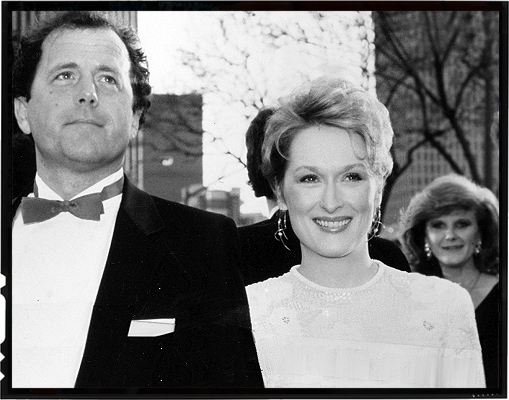
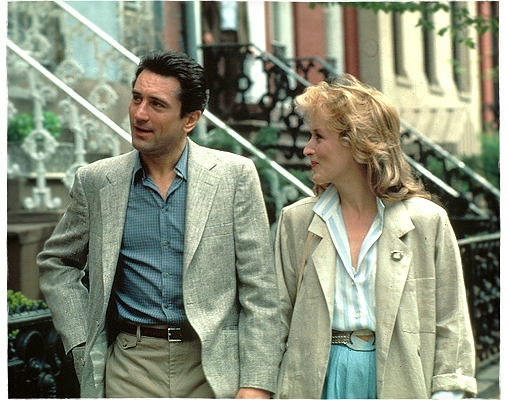
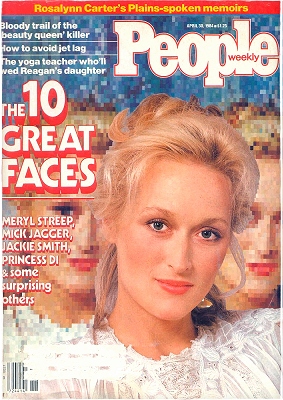
Meryl Streep and Robert De Niro teamed up for a second film collaboration titled “Falling in Love”. After co-starring in 1978’s “The Deer Hunter”, both actors went on to win second Academy Awards and were considered to be the greatest talents of their generations, so critics expected acting fireworks. Instead, De Niro and Streep chose to tell a rather simple story of a man and a woman, who meet in a crowded department store before Christmas, meet again on the train on their way to work and then fall in love, despite both being married. Critics were rather disappointed by the lack of big scenes in favor of everyday people with everyday problems. The films remains a small gem, but an often forgotten one.
1984 could have been a theatre-heavy year as well. Mike Nichols and “The Real Thing” producer Emanuel Azenburg were expected to put together a Broadway theater that was to include Meryl Streep, Kevin Kline, Mandy Patinkin and Amanda Plummer. Streep was going to star in “A Streetcar Named Desire”, “Private Lives” and possibly a Chekhov play. Mr. Nichols was to direct all three productions. But, as often, “we couldn’t work out the schedules for everyone involved”, Azenburg told The New York Times in March 1984.
“Falling in Love” released in November to lukewarm reviews and box office. Streep received the Italian David Di Donatello Award as Best Foreign Actress for “Falling in Love” and won her first People’s Choice Award as Favorite Motion Picture Actress – an award she would win throughout the 1980s. She also narrated the audio book and television programme “The Velveteen Rabbit”, for which she received a Grammy Award nomination for Best Album for Children. Her voice was also heard on an answering machine in Wendy Wasserstein’s “Isn’t it Romatic?” at the New Horizons.
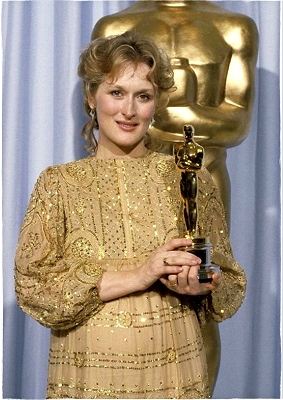
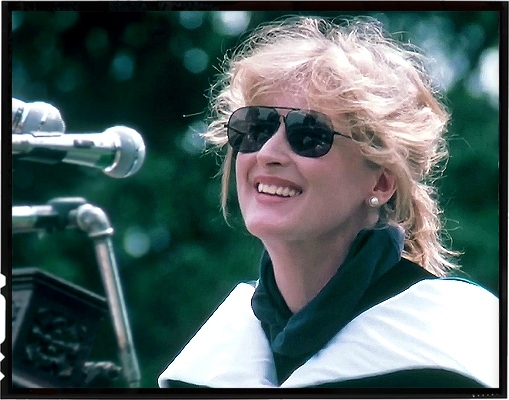

After the success with “Sophie’s Choice”, Meryl Streep went into a complete different direction and took on the role of Karen Silkwood, a blue-collar worker at a Nuclear plant in Oklahoma, who had gathered documents of safety breaches but died under mysterious circumstances before being able to hand them to the press. “Silkwood” was directed by Mike Nichols, who would become a friend and recent collaborator in Streep’s life and career. Nichols cast Kurt Russell as Meryl’s boyfriend and Cher in the role of her roomate and best friend. The singer turned actress was “frightened of meeting Meryl. I thought it was going to be like having an audience with the Pope. Somebody so big she’s out of this world. I mean, me and Meryl Streep? Never! [But] we’d knit, crochet, and joke about men. Meryl and I talked about our kids so much I thought something was wrong with us, that we didn’t have an existence outside of them. Then I realized we were just two proud mothers.”
Integrate what you believe into every single area of your life. Take your heart to work, and ask the most and best of everybody else too. Don’t let your special character and values, the secret that you know and no one else does, the truth – don’t let that get swallowed up by the great chewing complacency. Good luck, and welcome to the Big Time. (Meryl Streep, Vassar Commencement Speech, May 22, 1983)
“Silkwood” proved to be another prime example of Streep’s versatility upon its theatrical release in December of 1983. The film’s hefty box office gross was helped in part by the January 1984 U.S. Surpreme Court decision to reinstate the ten-million-dollar award against the Kerr-McGee Corporation. Meryl Streep received consecutive nominations for the Golden Globe, the British Film Award and the Academy Award. While “Silkwood” went home empty-handed at the Academy Awards, Cher received a Golden Globe as Best Supporting Actress and often credits her collaboration with Streep and Nichols as the turning point in her acting career.
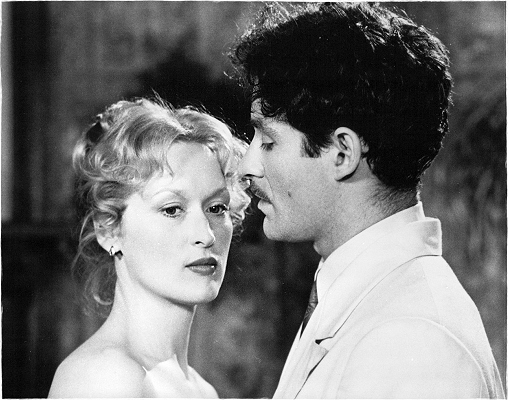
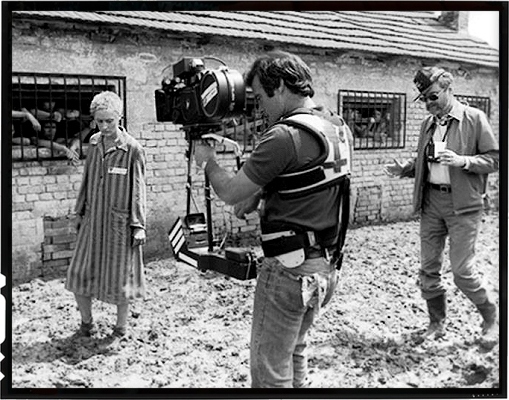
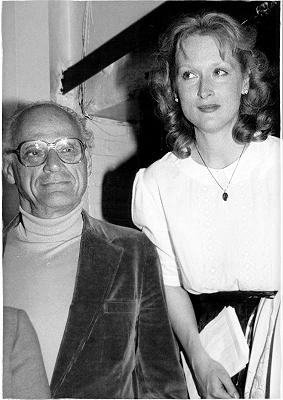
Meryl reunited with director Robert Benton for the stylish noir thriller “Still of the Night” – a role she has often mentioned to not enjoying to play due to its lack of dimension. Co-starring Roy Scheider, she was the ice-cold femme fatale who keeps the watcher guessing if she is a murderer or a damsel in distress. But there was another performance in 1982 that lifted her still-young career to another level. Director Alan Pakula had begun working on the adapting William Styron’s “Sophie’s Choice” for the big screen. The heart-wrenching story of a Holocaust survivor haunted by the demons of her past became a sought-after role in Hollywood, but Pakula was determined to cast an unknown Polish actress for the part. After all, parts of the films demanded Polish and German language skills.
For Streep, this was the role she always wanted to play and she persuaded Pakula to cast her in the lead. To prepare for the role, and the harrowing scenes in a concentration camp, which were filmed in Yugoslawia, she took intensive speech classes to master the accent and lost a fair amount of weight. “Sophie’s Choice” was released in December 1982 and won instant praise from critics as one of the singular best performance by an actor or actress. For her role, Meryl received accolades from the National Board of Review, the Los Angeles Film Critics Association Award, a third Golden Globe Award and a second Academy Award, her first as Best Actress.
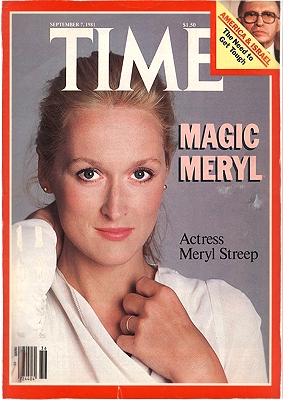
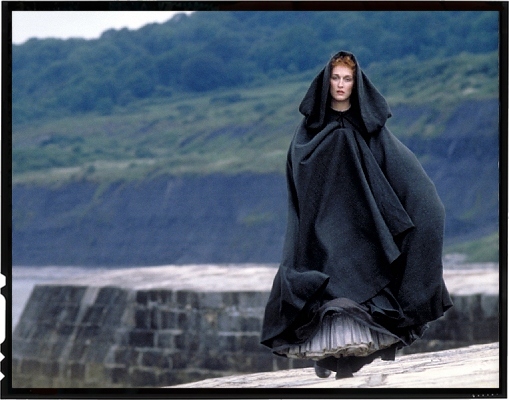
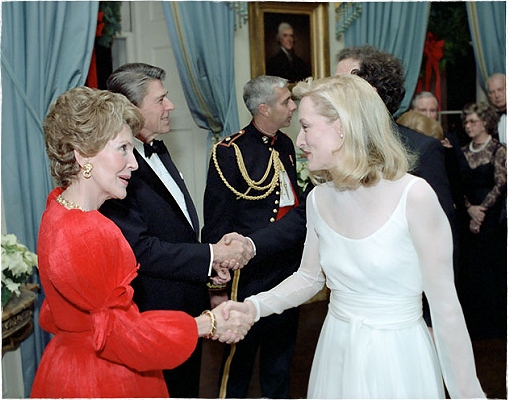
Director Karel Reisz cast Meryl Streep in her first leading role on film – actually two roles – in the historic drama, “The French Lieutenant’s Woman”, based on the novel by John Fowles, the screenplay was written by Harold Pinter. While critics – and her co-star Jeremy Irons – first wondered why an American actress was hired to play a British character in an adaptation of an acclaimed British novel, Meryl proved that she was the right choice. Twelve weeks before shooting commenced, she hired a vocal coach and spent long periods reading aloud from Jane Austin and George Eliot to speak the british accent of her character Sarah Woodruff perfectly. The victorian drama was shot on location in Lyme Regis. Telling the story of an educated biologist, Charles Smithson, who’s engaged to be married, but falls in love with the outcast Sarah Woodruff, a stranger in town, since it was once rumored she had an affair with the title-given French Lieutenant. Reisz used a complicated, but masterfully performed turn in his storyline. A second plot, about two fictional actors, again performed by Streep and Irons, and their own little romance on the set of the film. While Irons’ performance made no big difference between his Charles and the actor, called Mike, it was a joy to see two totally different appearances by Streep as the victorian Sarah and the modern and attractive actress Anna, and how their on-set romance is interwoven with the heavy cost of the victorian tragedy.
The French Lieutenant’s Woman and especially Streep’s double performance was praised by critics in the USA and the UK alike. The New York Times wrote: “Miss Streep has never looked more beautiful nor has she been more in command of her talent as she switches back and forth between the lightweight movie actress and the tragic Sarah, who enters the scene as a Hardy-like victim of fate and stays on to triumph as a modern woman a century ahead of her time.” When award season began, the British Academy recognized Streep’s performance with their BAFTA Award, a Golden Globe and the Award from the Los Angeles Film Critics Association followed. Meryl was also again nominated for an Oscar, the first time in the Leading Actress category, the award was eventually given to Katharine Hepburn.

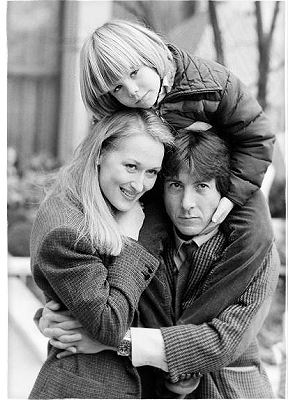
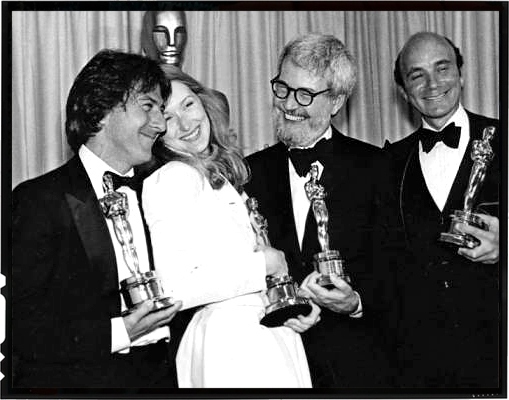
The early new decade and wide January release of „Kramer vs. Kramer“ brought another sweep of public attention, but this time worldwide. Streep was proclaimed *the* star for the ‚80s on the cover of Newsweek Magazine and received the Golden Globe, Los Angeles Film Critics Circle Award, National Board of Review, New York Film Critics Circle Award and Academy Award for Best Supporting Actress for „Kramer vs. Kramer“. The film received 5 Academy Awards out of its 9 nominations, including Best Picture, Best Director, Best Adapted Screenplay and Best Actor for Dustin Hoffman. Meryl Streep did not release a film in 1980. She spent the Summer with her new young family in the United Kingdom, shooting her first leading role in the big screen adaptation of John Fowles‘ „The French Lieutenant’s Woman“.
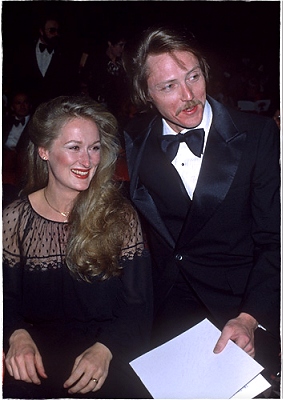

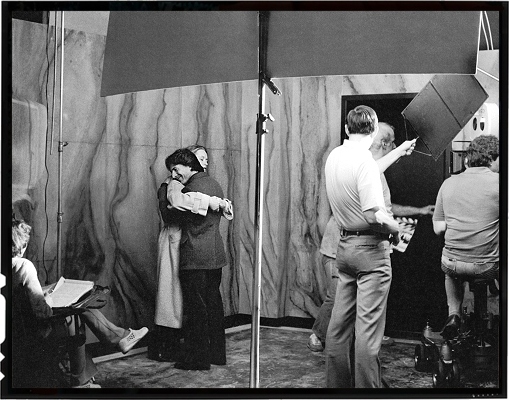
When „Holocaust“ aired in West Germany on the Third (Regional) Network in January of 1979 (a forum apparently designed to lessen its impact), viewer response was little short of stunning. According to German polls intended to measure audience reaction before, immediately after, and several months after „Holocaust“ appeared, this single television event had a significant effect on West Germans’ understanding of this episode in the history of their country. Despite strong opposition to the broadcast before it aired, some 15 million West Germans – roughly half the adult population – tuned in. For Meryl, who later recalled having a miserable time filming the series in Austria, the year was another turning point in her still young career. She starred in three theatrically released films – „The Seduction of Joe Tynan“, „Manhattan“ and „Kramer vs. Kramer“. The latter hit a nerve with audiences and critics, who praised its frank look at separation and navigating a divorce. On the polar opposite of the film’s spectrum, Meryl Streep married sculptor Don Gummer and had her first child, a son named Henry.


